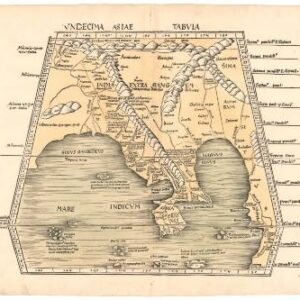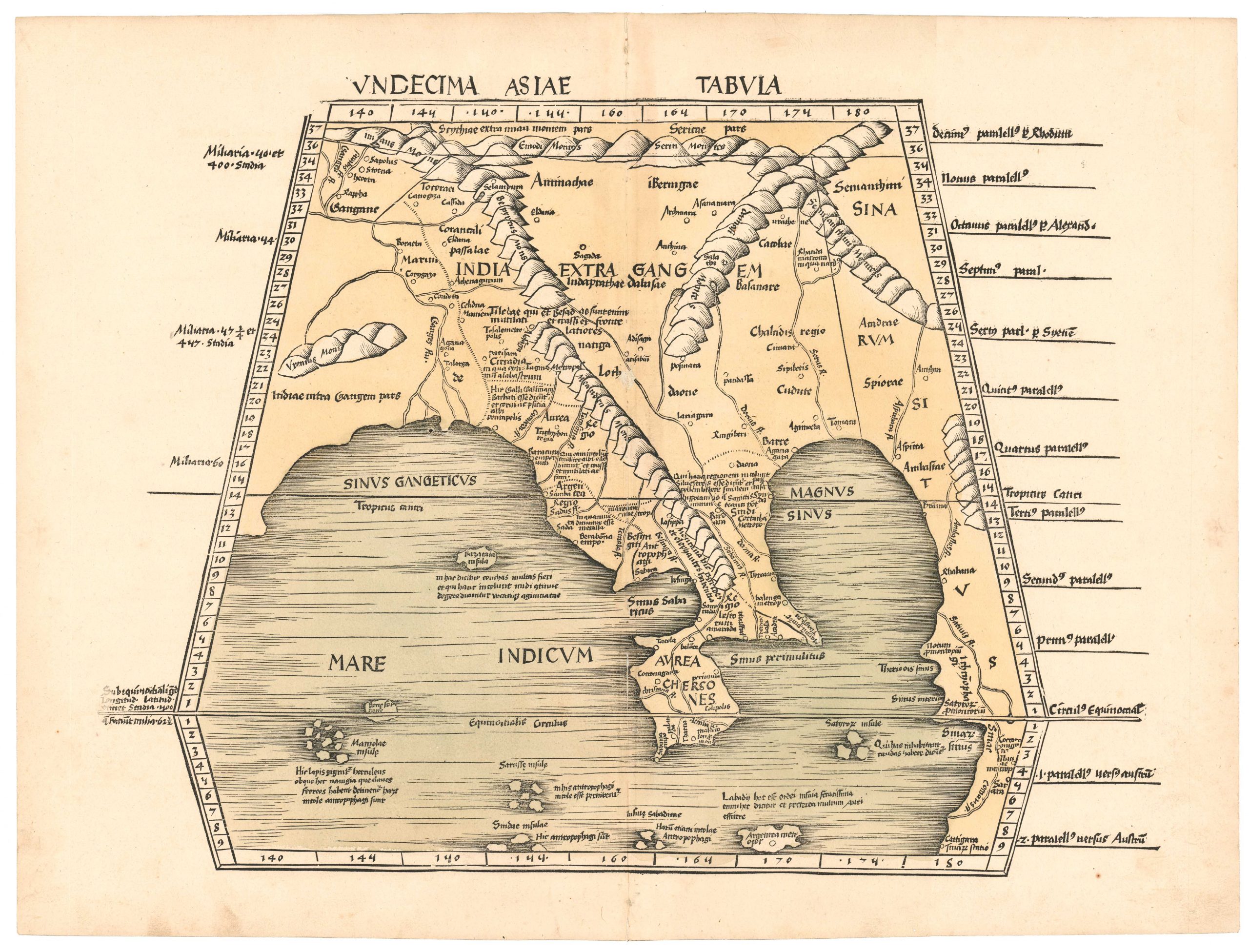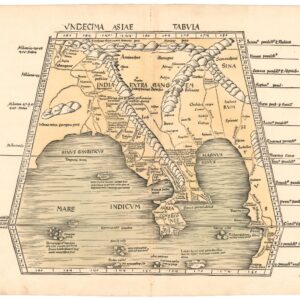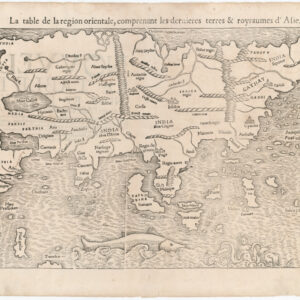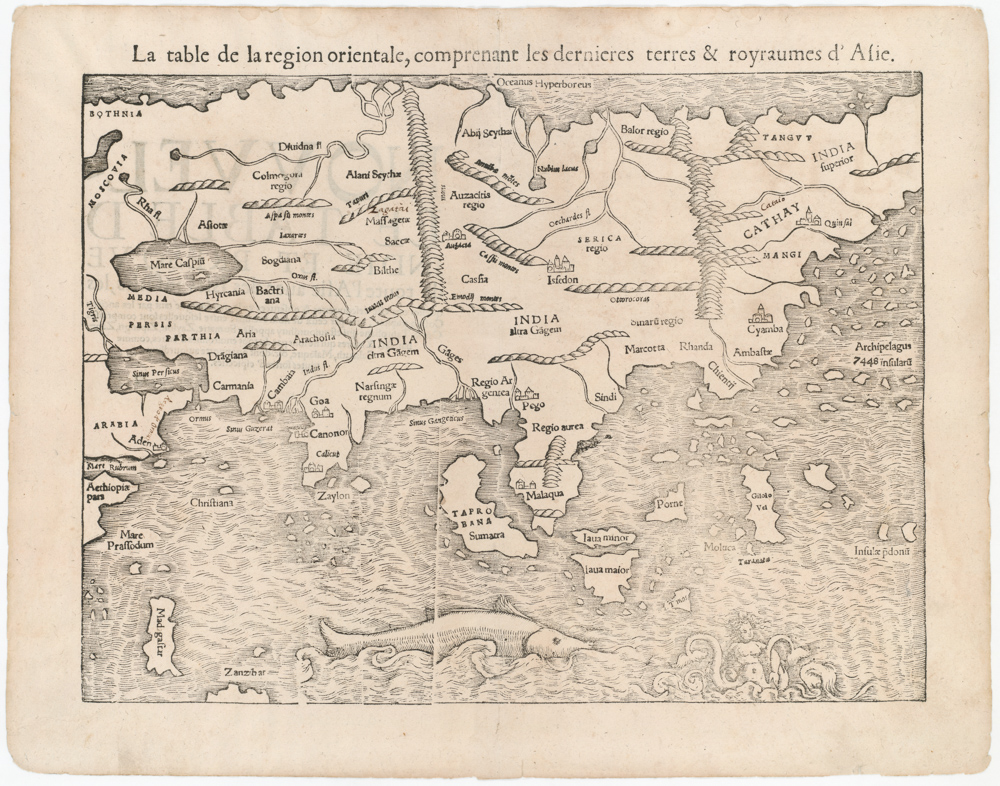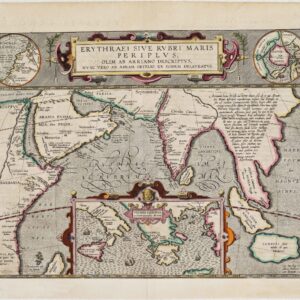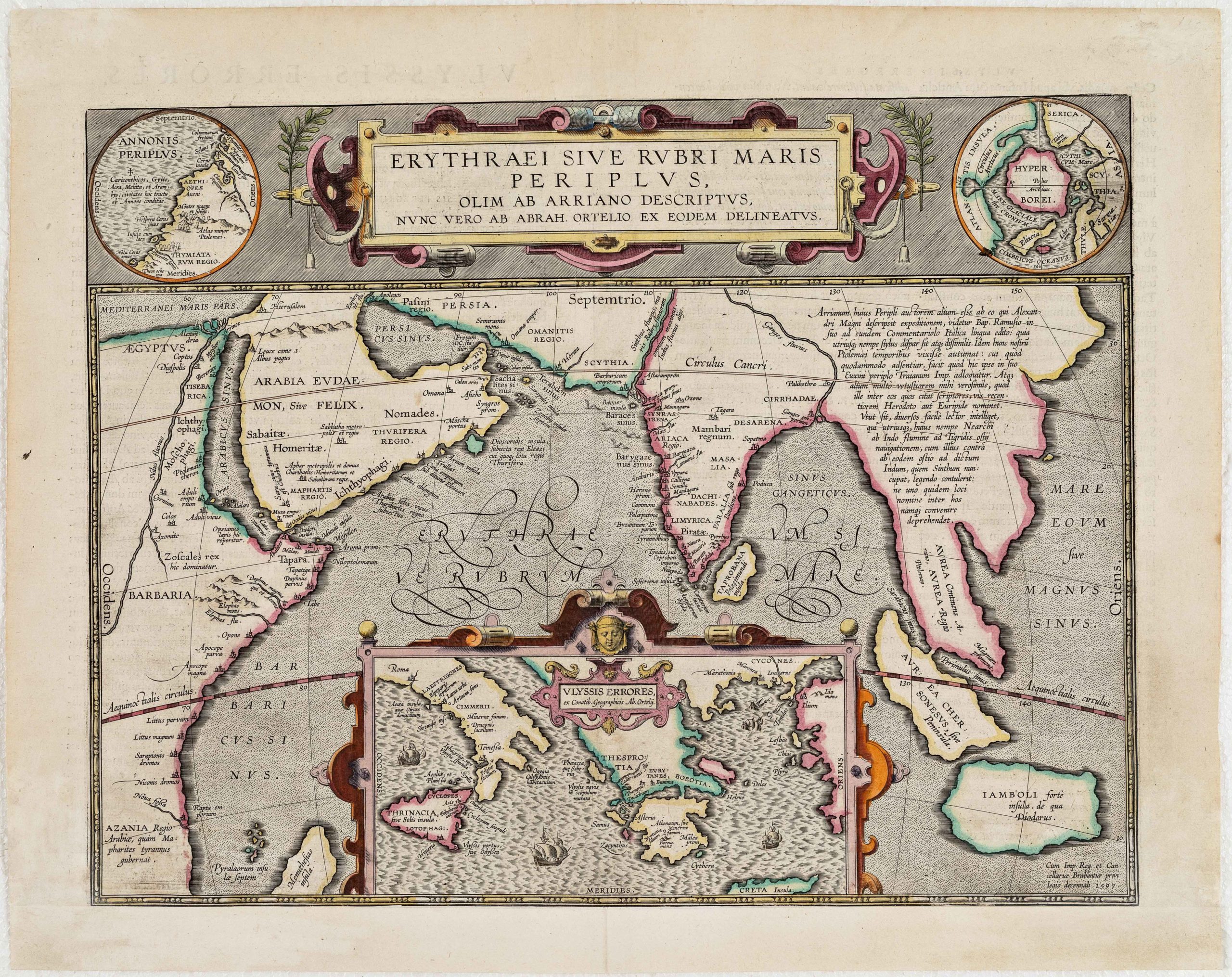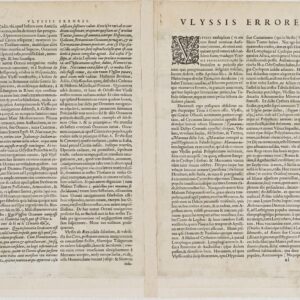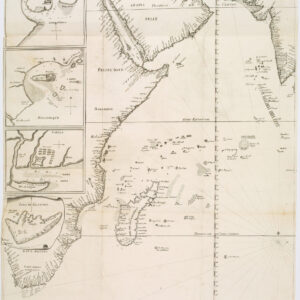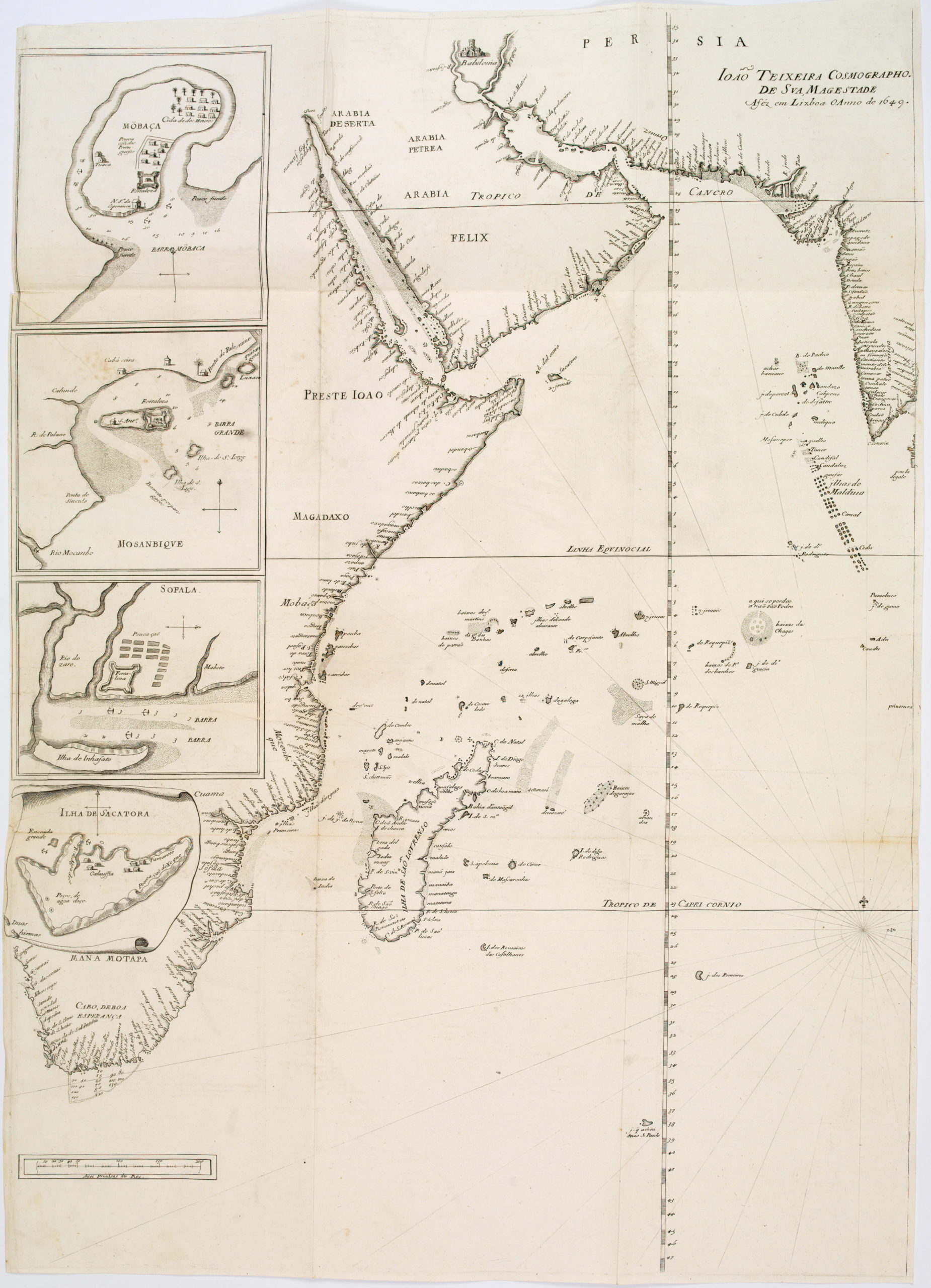Perhaps the greatest 17th century atlas map of Asia.
Asia Divisa nelle sue Parti secondo lo stato presente.
$4,400
1 in stock
Description
Vincenzo Maria Coronelli’s detailed two-sheet map of Asia is a gorgeous late 17th-century capture of the world’s largest continent that showcases the latest discoveries in Southeast Asia and the Pacific.
The map spans from Central Europe to New Zealand, featuring detailed annotations and including notable elements such as the Great Wall in China and an incomplete depiction of an Australian landmass connected to New Guinea. A large text cartouche in Africa praises the Jesuit missionaries for their contribution to expanding European presence in Asia, and at the bottom of the map, an elaborate title cartouche features a Bedouin tent, a caravan driver, and several other exotic characters meant to represent the inhabitants of this massive continent.
The map highlights Dutch encounters with Australia, naming regions based on lesser-known explorers like Jan Carstenz and Pieter Nuyts. Abel Tasman’s recent discoveries in Australia are shown in considerable detail and the map provides an early and somewhat ephemeral representation of New Zealand (including an erroneous note that this was discovered by Abel Tasman in 1654, when, in fact, its was in 1642). The Pacific region is rich in detail, featuring portions of New Zealand, Van Diemens land, Carpentaria, and Nuova Guinea; although, curiously, the Solomon Islands have been omitted.
The treatment of East Asia and Japan is noteworthy due to including a large Terra di Iesso as a separate island at the easternmost point on the map. An annotation also states that this was discovered by the Dutch, albeit in 1643. Yesso Island is most likely a warped rendition of Hokkaido, which in Japanese was known as Ezo. This massive yet imagined landmass reveals the speculative nature of cartography in the late 17th century. It reflects how mapmakers at the apex of global exploration grappled with a complex merger of knowledge and myth.
In general, Dutch exploration and cartography played a significant role in informing Coronelli on the configuration of Southeast Asia. The Indonesian Archipelago and the Philippines (La archipelago di San Lazaro) are depicted in considerable detail, as is the Mariana Archipelago (Ladroni).
Although Coronelli is often celebrated for his combination of beauty and accuracy, the map contains several surprising errors and omissions. In addition to the erroneous dating of Tasman’s first arrival in New Zealand, Quiros’ discovery of the New Hebrides (Vanuatu) has been omitted altogether. Another more subtle but equally profound error is the depiction of the rivers of Southeast Asia, which are shown as having a single common source in a large lake (Lac Di Chiamai). This was a misconception propagated by the Jesuit cartographer Matteo Ricci.
Concluding remarks
Coronelli’s map, with its intricate engravings and meticulous detail, is an excellent example of the exploding knowledge base for European mapmakers of the 17th century. The world was expanding rapidly, and even the best compilers and cartographers found it hard to keep up. Both his globes and the Atlante Veneto atlas cemented Coronelli’s position as one of the finest mapmakers of his day, and this stunning double-paged chart of Asia is a testament to the skill and determination that was required to succeed as a cartographer in 17th-century Venice.
Context and census
The double-sheet map of Asia was initially published as part of Coronelli’s prestigous atlas, the Atlante Veneto (1691), which was conceived as a follow-up to Willem Blaeu’s Atlas Maior. In addition to a compendium of geographical and scientific knowledge, the Atlante included an essential treatise on globe-making. It was extended and reprinted several times so that by 1701, it consisted of no less than twelve volumes. This ambitious endeavor solidified Coronelli’s reputation as a leading cartographer of his day.
Like many of Coronelli’s charts from the Atlante Veneto, the Asia map essentially replicates the configuration from Coronelli’s large 1688 globe, on which Asia, in particular, was endowed with many new and noteworthy features. The OCLC notes examples of this map in the National Library of Spain (no. 1192398211) and the Bayerische Staatsbibliothek Munich (no. 159835043). The OCLC also lists examples of this map at Cambridge University and the Sachsiches Landesbibliothek in Dresden (no. 36770687).
Cartographer(s):
Vincenzo Maria Coronelli (1650 – 1718) was a Franciscan printer, cartographer, and globe-maker from Venice. Due to his religious background, many of his charts have been signed P. Coronelli, meaning Père or ‘Father’, and referring to his status as a friar of the Franciscan Order. He was appointed official cosmographer for the city of Venice and was later employed as royal cartographer to the King of France. In particular the latter position meant that he had access to the latest records and materials from French pioneers and voyages of exploration. This caused many of his charts to be cutting-edge innovations that redefined the newly discovered parts of the world in an entirely novel fashion. It also meant that Coronelli would have no scruples in declaring uncontested or virgin land in the New World as part of Nouvelle France. This is exemplified in Coronelli’s celebrated 1685 chart of Western Canada or Nouvelle France, in which the official French territories have been expanded thousands of miles to the west and south, so that most of the Midwest, including the Mississippi Valley, has been subsumed under a French claim.
Coronelli’s access to the latest French sources and intelligence is part of what has made his maps so cartographically decisive and collectible. An example of this is found in his 1688 chart of upper Mexico and the Rio Grande (modern Arizona, California, and parts of New Mexico). This map was, at the time of its publication, one of the most detailed and accurate maps of the Rio Grande on the market. The detailed information conveyed in Coronelli’s map came directly from Diego Penalosa, the Spanish governor of New Mexico (1661-63) who turned rogue and provided the French King with a wealth of strategic geographical information. His ambition was to lure the French into attacking New Mexico from the neighboring territory of Louisiana. Despite the controversial source of his information (or perhaps precisely because of it), Coronelli does not hesitate to lay credit where credit is due, and mentions Penalosa directly in the map’s cartouche.
Condition Description
Very good. A couple of minor spot blemishes.
References
Sweet & Yeo 73; Tibbetts 155; Tooley 351 pl.XXII; Clancy, Terra Australis 6.22.
